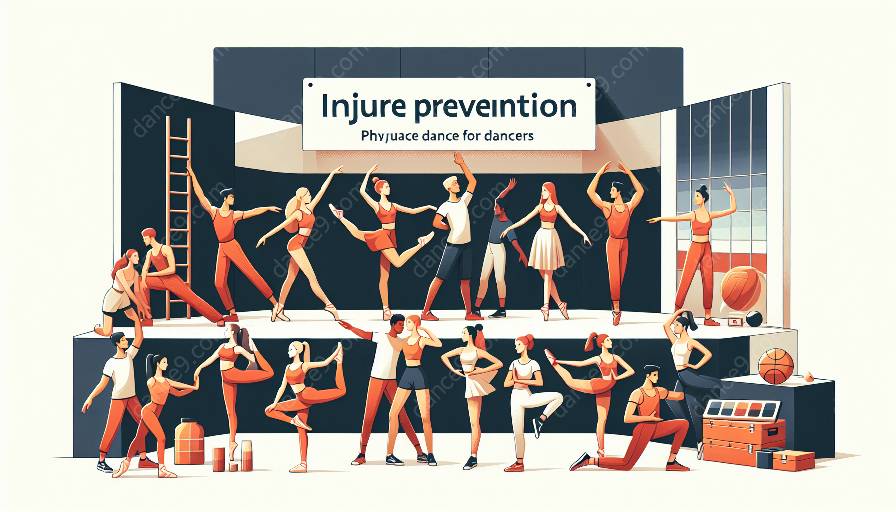Dance is a physically demanding art form, and the health and well-being of dancers are of utmost importance. Fostering a culture of safety and support in dance environments is crucial for injury prevention and the physical and mental health of dancers. In this article, we'll explore the steps to create a safe and supportive dance community and the impact it has on the overall wellness of dancers.
Injury Prevention for Dancers
Dancers are susceptible to a wide range of injuries due to the rigorous physical demands of their art. From sprains and strains to more serious conditions like stress fractures and tendonitis, dancers must take proactive measures to prevent injuries. Creating a culture of safety involves implementing practices that focus on injury prevention and promote physical well-being.
Implementing Safe Dance Practices
One of the fundamental aspects of a safe dance environment is the implementation of safe dance practices. This includes proper warm-up and cool-down exercises, adherence to correct technique, and providing adequate rest and recovery time. Educating dancers, instructors, and support staff about the importance of these practices is essential in building a culture of safety.
Additionally, creating a supportive environment where dancers feel comfortable communicating any discomfort or pain can help prevent minor issues from turning into serious injuries. Open lines of communication between dancers, instructors, and healthcare professionals are vital for identifying and addressing potential injury risks.
Training and Conditioning
Physical fitness and conditioning play a crucial role in injury prevention for dancers. Developing well-rounded training programs that include strength, flexibility, and cardiovascular exercises can help dancers build resilience and reduce the risk of injury. Furthermore, incorporating cross-training activities can provide a balanced approach to physical fitness and reduce the likelihood of overuse injuries.
Promoting Physical and Mental Health in Dance
Physical health and mental well-being are deeply interconnected, especially in the demanding world of dance. Creating a supportive environment that prioritizes both aspects of wellness is essential for the overall success and happiness of dancers.
Emphasizing Self-Care
Encouraging dancers to prioritize self-care is crucial for promoting physical and mental health. This includes proper nutrition, hydration, adequate rest, and stress management techniques. Helping dancers develop healthy habits and providing resources for mental health support can contribute to a positive dance environment.
Supporting Mental Health
It's important to recognize that mental health is just as significant as physical health. Dance environments should offer access to mental health resources and support systems. Additionally, fostering a culture of empathy, understanding, and open communication can create a safe space for dancers to express their feelings and seek help when needed.
Implementing Wellness Programs
Implementing wellness programs that address both physical and mental health can further support dancers in maintaining overall well-being. These programs can include workshops, seminars, and access to qualified professionals such as nutritionists, physical therapists, and mental health counselors.
Building a Supportive Dance Community
Creating a culture of safety and support in dance environments goes beyond individual practices and extends to the broader dance community. Building a supportive network can enhance the well-being of dancers and contribute to a thriving dance culture.
Encouraging Teamwork and Collaboration
Encouraging teamwork and collaboration among dancers, instructors, and support staff can foster a sense of community and mutual support. By working together towards common goals, dancers can feel a sense of belonging and unity, contributing to a positive and supportive dance environment.
Promoting Inclusivity and Diversity
Promoting an inclusive and diverse dance community is essential for creating a safe and supportive environment for all individuals. Embracing diversity in dance can help foster understanding and empathy, ultimately contributing to a more supportive and welcoming atmosphere.
Engaging in Open Communication
Open lines of communication are vital for maintaining a safe dance environment. Providing channels for dancers to voice their concerns, ask for assistance, and offer feedback can help build trust and establish a supportive community where everyone's well-being is valued.
Conclusion
Creating a culture of safety and support in dance environments is an ongoing process that requires dedication from all stakeholders involved. By prioritizing injury prevention, physical and mental wellness, and building a supportive dance community, dancers can thrive in an environment that values their well-being. Through education, communication, and proactive measures, the dance world can embrace a culture of safety and support that benefits the entire community.


































